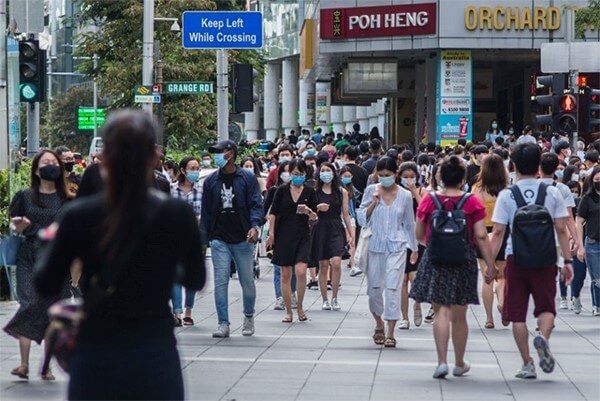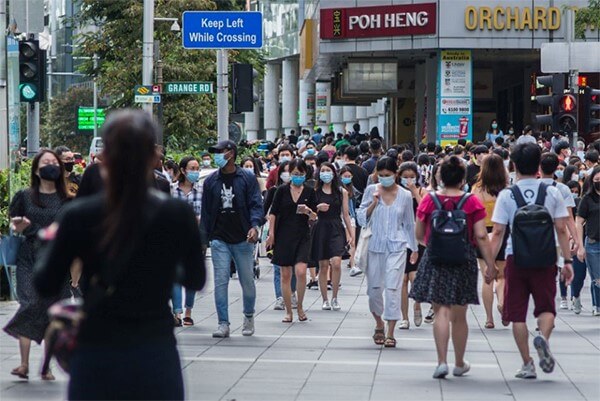-
The role of behavioral influences
As the world slowly emerges from the worst pandemic since 1918, two of the most frequent questions we hear from investors are: “Will people return to cities? What can we learn from the Asia-Pacific experience?”
Although there are significant differences in the circumstances facing employers, workers, and consumers in each country, we believe it is quite helpful to understand what is occurring in the major cities of the Asia Pacific region as a preview of what might occur in the West. Behavioral influences play a large role. The sooner people are willing to return to their offices, the lower the potential impact on investment performance. Culturally, face-to-face meetings in a formal office setting are often viewed as essential business rituals in countries like China, Japan, and South Korea. In Shanghai, where the re-opening has been the most advanced globally, office demand turned positive in the second quarter of 2020. In Singapore, office demand (net absorption) turned positive in the fourth quarter of 2020, despite the worst economic decline since 1965 and the government’s policy capping office capacity at 50%. Even in the retail sector, which was hit harder by the pandemic than other sectors, occupier demand in Shanghai was positive in 2020. Chinese consumers gradually returned to malls when the health risk largely declined in April (see page 43).
The sooner people are willing to return to their offices, the lower the potential impact on investment performance.

The behavioral approach suggests that human psychology plays an important role in the decisions we make. A rational, fact-based approach to risk assessments and decision-making does not fully explain how people react to dangerous situations and their lingering fears after the danger has passed. The Asian experience seems to demonstrate that “recency bias” can be overcome through confidence-building actions and communications taken by governments and businesses. Despite cautious optimism, uncertainty lingers in major cities like Melbourne and Tokyo (see page 7). Nevertheless, it helps that mask-wearing is fully accepted and ubiquitous across most of the region. During times of uncertainty, behavioral influences on decision making are especially important. For instance, core beliefs, cognitive biases, past experiences, or cultural differences can influence decision making, which could ultimately affect economic and investment outcomes.
We believe the pandemic is a perfect example of why the behavioral approach matters. Asia Pacific’s ability to contain the pandemic is evident in traffic congestion and mobility indices (see pages 7 and 27). Rising mobility is a sign of rising confidence that builds into a virtuous cycle, when it becomes clear that leaving home while wearing a mask and social distancing–does not cause a resurgence of COVID. The pandemic control policies followed in major Asia Pacific countries, even before vaccine rollout, have a positive correlation with the region’s economic resilience, particularly in China, South Korea, Australia, and Singapore. The return of social and economic activities and real estate demand in Asia Pacific show what the West may be able to look forward to, as rising immunity levels in Europe and North America are likely to enable the same virtuous cycle of mobility and activity.
The rollout of COVID-19 vaccines will first help restore domestic activities, particularly in countries that were not able to control the spread of the virus in 2020– a critical step to repair their economies. Ultimately, for the global economy to reach the “new normal”, most likely a significant portion of the world population will need to be vaccinated. However, for now, the reality is that international border controls are getting stricter even in countries where vaccine rollouts have been the most advanced (e.g., the United Kingdom, in part, due to new strains of COVID-19); and in parts of the world that have been the most successful in controlling COVID-19, quarantine and social distancing rules remain stringent (e.g., Australia and Singapore) to ensure the momentum of the domestic recovery continues.
Looking forward, each country has a different vaccination rollout schedule and it could take some time for immunity to rise to levels that vastly reduce the risk of getting infected (see pages 6, 50). In the meantime, the upcoming economic and real estate recovery in most countries will rely more heavily on domestic demand. The experience of Asia Pacific shows us that a return to cities is not only possible, but probable, when both the behavioral and the biological effects of the coronavirus are tamed.

Apr 01, 2025
Working backwards: Dealing with unprecedented policy uncertainty
In this period of elevated policy uncertainty, real estate investors should focus on what they can and should do amidst all the noise.




